About Osaka Castle
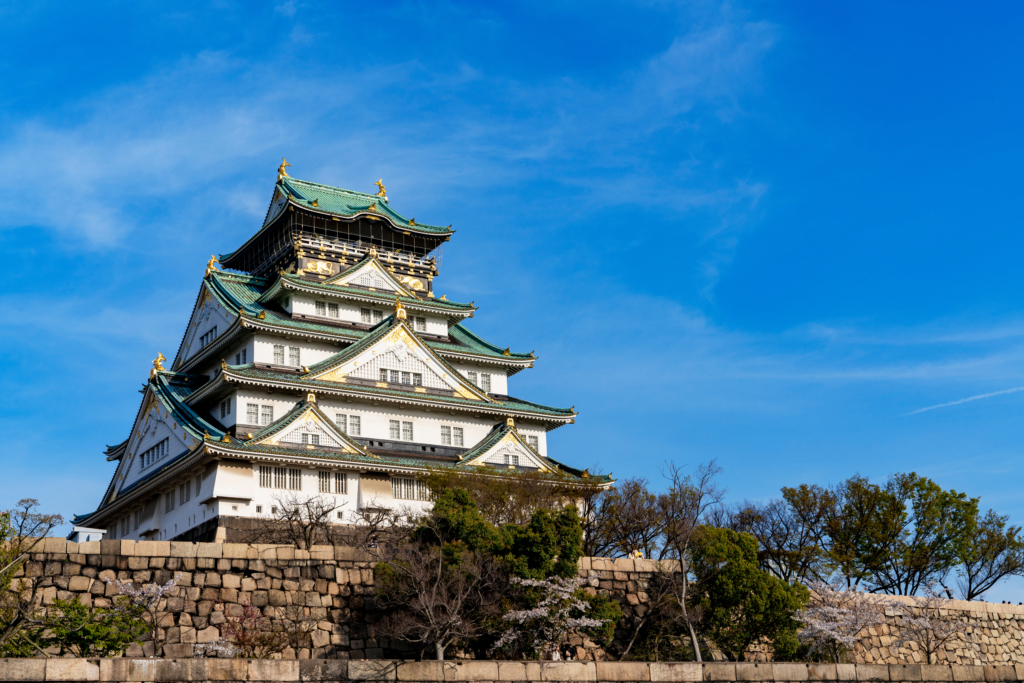
Osaka Castle is a magnificent structure that symbolizes Japan’s rich history and culture. It’s an unmissable spot for foreign visitors, known for its beauty and historical significance. Built in the 16th century by Toyotomi Hideyoshi, the castle played a crucial role in the events of Japan’s Warring States period. The moats and walls tell tales of past defenses while exuding overwhelming beauty. Inside, visitors are captivated by beautiful gardens and ancient architectural details. The castle’s tower houses a museum where you can learn about Hideyoshi’s life and the Warring States period, with multilingual displays for foreign visitors. From the top floor, you can enjoy a breathtaking 360-degree view of Osaka, especially stunning during cherry blossom season in spring and the autumn foliage.
Osaka Castle Park is a place to enjoy the natural beauty of each season, particularly crowded during the cherry blossom season in spring. It’s perfect for picnics, strolls, or just relaxing amidst vast greenery. Osaka Castle is an ideal location to deeply understand Japan’s history and spend time in beautiful nature, offering unforgettable experiences to all visitors with its historic buildings and gardens.
Osaka Castle Museum E – Ticket
Click here 90mins Samurai Pilgrimage Osaka Castle Tour
Click here 150 mins Deep Samurai Experience near Osaka Castle
Osaka Castle location
Osaka Castle is located in Osaka City, Japan, one of the country’s major cities. Situated in the heart of the city, it is easily accessible. Here are detailed directions for getting to Osaka Castle:
- Location
- Address: 〒540-0002 Osaka Prefecture, Osaka City, Chuo Ward, Osaka Castle
- Transportation
- By Train
- Nearest Stations:
- JR Loop Line ‘Osakajokoen Station’: About a 10-minute walk to the castle.
- Subway Tanimachi Line ‘Temmabashi Station’: About a 15-minute walk.
- Subway Chuo Line ‘Morinomiya Station’: About a 15-minute walk.
- These stations are also well connected to major Osaka stations such as Osaka Station and Namba Station.
- Nearest Stations:
- By Bus
- Osaka City Bus: There are numerous routes to Osaka Castle Park and the surrounding areas.
- Usually, it’s a short walk to the castle from the bus stops.
- By Car
- Since Osaka Castle is in the central area of Osaka City, access by car is possible, but traffic in the city is often congested.
- There are paid parking areas nearby, but be aware they can get crowded on weekends and holidays.
- By Train
- Operating Hours
- Opening Hours: Open from early morning to evening, but times may vary depending on the season.
- Admission Fee: There is a charge to enter the main tower of Osaka Castle, but the surrounding park can be explored for free.
- Peak Time Crowding: Especially during the cherry blossom season and on holidays, the area can get very crowded, so it’s recommended to visit with time to spare.
Osaka Castle is a major tourist attraction in Osaka, highly recommended for those interested in history and Japanese culture. The park around the castle also offers a variety of flowers to enjoy throughout the seasons.
History of Osaka Castle
The history of Osaka Castle is deeply related to various eras and shoguns of Japan. Let me explain its history, intertwined with the main shoguns of each era.
About the Current Osaka Castle
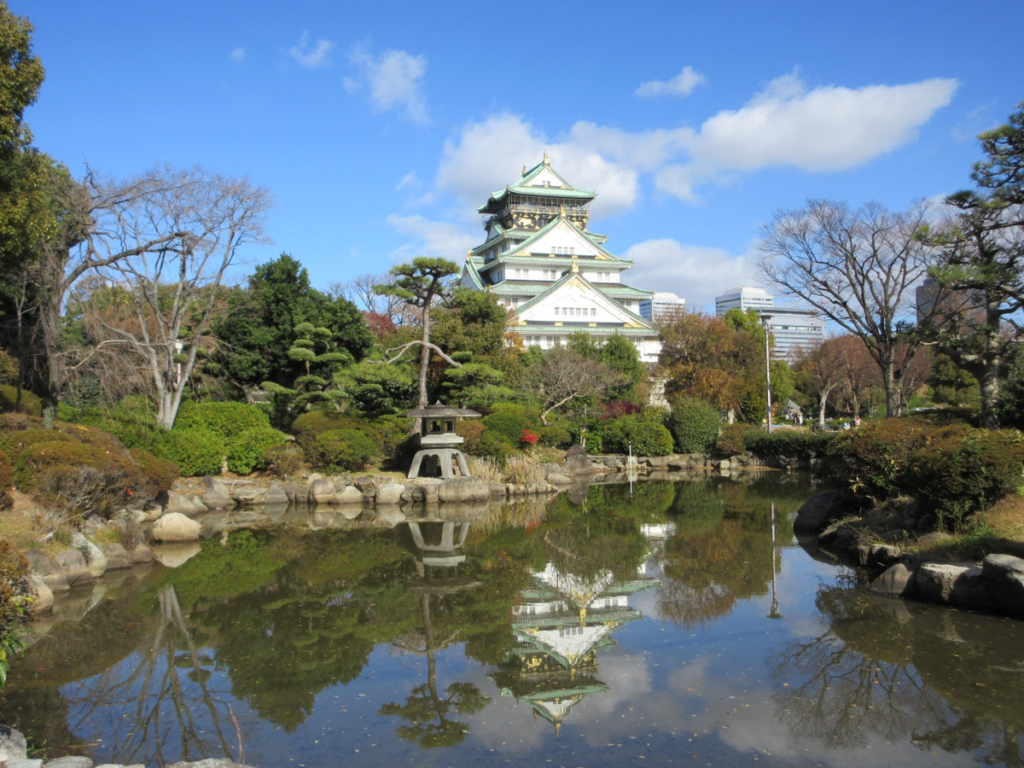
Osaka Castle is protected by a moat and double walls, and nearby is the Osaka Castle Park. Within the park, there are various facilities like a Japanese garden, sports facilities, and a concert hall.
The current main tower was rebuilt in the Taisho era with reinforced concrete. While its exterior imitates the Sengoku period tower, the interior houses an eight-story museum where you can learn about Osaka Castle and its history.
Osaka Castle attracts many tourists throughout the year, especially during the cherry blossom season in spring and the autumn foliage season. From the observatory of the main tower, you can enjoy a panoramic view of Osaka City.
Toyotomi Hideyoshi’s Era (Construction)
Toyotomi Hideyoshi (1537-1598): Osaka Castle was constructed by Toyotomi Hideyoshi in 1583. It was built as a symbol of his power after unifying almost all of Japan.
Tokugawa Ieyasu and Early Tokugawa Shoguns
Tokugawa Ieyasu (1542-1616): After the Battle of Sekigahara in 1600, Tokugawa Ieyasu seized control of Japan, and Osaka Castle fell under the Tokugawa shogunate’s rule.
Tokugawa Hidetada (1579-1632): After Ieyasu’s death, Hidetada, as the second shogun, maintained Osaka Castle as a significant political center.
Tokugawa Iemitsu (1604-1651): During the era of the third shogun, Iemitsu, Osaka Castle was rebuilt and functioned as a symbol of the shogunate’s control over Western Japan.
Mid-Tokugawa Shoguns
During this period, Osaka Castle was maintained as an important stronghold of the Tokugawa shogunate, undergoing several modifications and reconstructions. Notably, during the reign of Tokugawa Yoshimune (1684-1751), the castle played a significant role as a political and economic center, especially during his reforms.
End of the Shogunate and Meiji Restoration
During the final years of the shogunate, Osaka Castle became a battleground between the shogunate and anti-shogunate forces. After the Meiji Restoration, it was used as a military facility by the new government, though its political and cultural importance diminished.
Modern Times
The castle sustained damage during World War II but was restored after the war and preserved as a historical building.
Today, Osaka Castle is an important tourist destination and a place of relaxation for the citizens. It has been closely connected with the various political changes and reigns of the shoguns throughout Japan’s history, serving as a vital symbol in Japanese history. Its luxury and historical significance continue to impress people in modern times.
Private Osaka Tour with English Speaking Driver-up to 6 Travelers
Transition from Toyotomi to Tokugawa
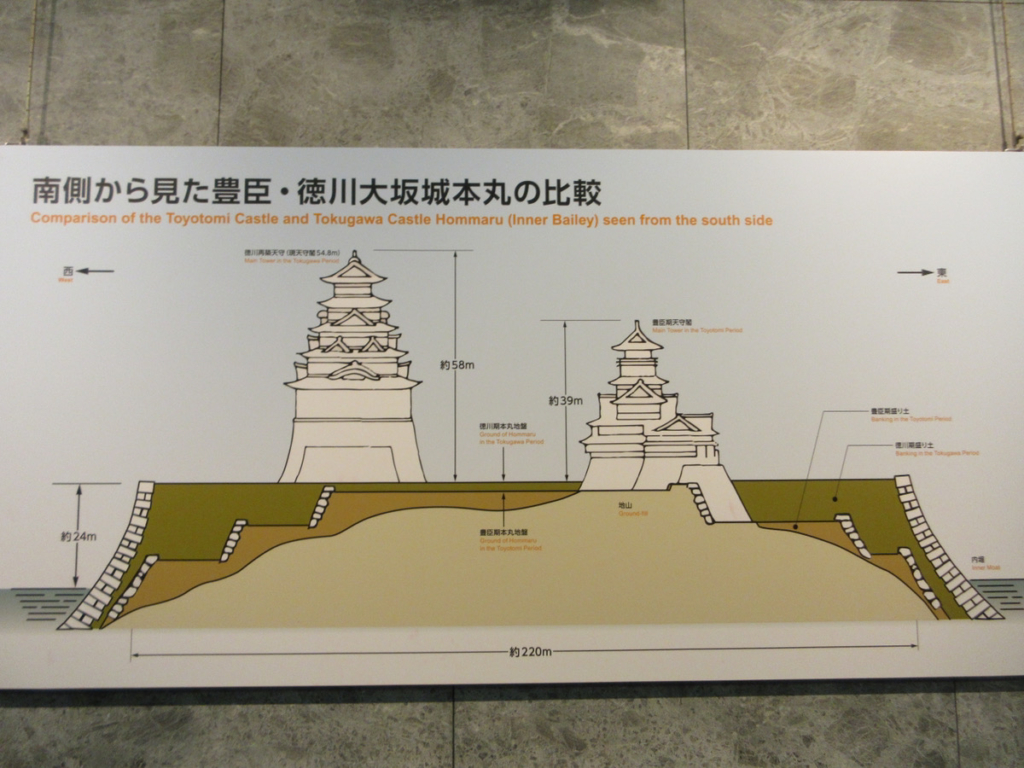
From the construction of Osaka Castle by Toyotomi Hideyoshi to its takeover by Tokugawa Ieyasu, the castle was deeply involved in several important battles and political movements. Here’s a detailed explanation of the major events of that era.
Toyotomi Hideyoshi’s Construction and Rule
1583: Toyotomi Hideyoshi began the construction of Osaka Castle, which functioned as a symbol of his power and as a political and military center after unifying Japan.
1580s-1590s: Hideyoshi used Osaka Castle as a base to advance the unification of Japan and to strengthen his control over the daimyos (feudal lords).
Toyotomi Hideyoshi’s Korean Campaigns
1592 and 1597: Hideyoshi conducted two Korean campaigns, during which Osaka Castle remained the center of political decision-making. These campaigns exhausted Japan’s national strength and increased dissatisfaction among the daimyos.
Toyotomi Hideyoshi’s Death and Succession Issues
1598: Hideyoshi’s death raised significant questions about the future of the Toyotomi regime, including Osaka Castle.
As his successor, the young Toyotomi Hideyori was appointed, but his youth and lack of ability led to political instability.
The Battle of Sekigahara and the Rise of Tokugawa Ieyasu
In 1600, the Battle of Sekigahara occurred between the Eastern Army, led by Tokugawa Ieyasu, and the Western Army, composed of former retainers of Toyotomi Hideyoshi. Although Osaka Castle was not directly involved in the battle, its fate was closely tied to the Toyotomi family. Ieyasu’s victory significantly weakened the political standing of the Toyotomi family.
Transition of Osaka Castle to the Tokugawa Shogunate
After Sekigahara, Ieyasu became the de facto ruler of Japan, gradually diminishing the influence of the Toyotomi family. Osaka Castle remained under Toyotomi control but was overseen by the Tokugawa shogunate, diminishing its political significance. During this era, the castle transitioned from a symbol of Toyotomi Hideyoshi’s power to a symbol of Tokugawa Ieyasu’s governance, continuing to play a vital role in shaping Japan’s political landscape.
The Siege of Osaka
The Siege of Osaka was a pivotal event in the history of Osaka Castle, consisting of the Winter Campaign (1614) and the Summer Campaign (1615), marking the final showdown between the Toyotomi family and the Tokugawa shogunate.
Winter Campaign (1614): The Tokugawa shogunate besieged Osaka Castle to eliminate the Toyotomi’s influence, seeing Toyotomi Hideyori and his mother, Yodo-dono, as threats. The castle served as the Toyotomi’s last stronghold, where loyal warriors and peasants gathered. Defenses were strengthened with fortified walls and moats. The campaign mainly involved skirmishes, and eventually, Ieyasu proposed a truce, accepted by Hideyori.
Summer Campaign (1615): Despite the truce, mutual distrust persisted, leading to renewed preparations for uprising by the Toyotomi and increased pressure from the shogunate. The castle again became the focal point of conflict. Hideyori and his retainers fought fiercely in defense, but the Tokugawa forces launched a major attack, overwhelming them. The castle was destroyed, and Hideyori committed suicide.
Aftermath of Osaka Castle
The Toyotomi’s annihilation solidified the Tokugawa shogunate’s power. The shogunate later rebuilt Osaka Castle, but its political and military significance was not as prominent as before. The Siege of Osaka symbolized the end of Japan’s Warring States period and the firm establishment of the Tokugawa shogunate, with Osaka Castle at the heart of this historical shift.
Osaka Castle during the Toyotomi Period
The Toyotomi-era castle tower is believed to have had five stories, six floors, and two underground levels, depicted in several screen paintings, notably the “Osaka Castle Screen” and the “Summer Battle of Osaka Screen.” The castle’s exterior walls were coated in black lacquer adorned with gold-decorated chrysanthemum crests and large wood carvings, including paulownia gates. The second and third tiers featured large hipped-gabled roofs arranged in a watchtower style, with the top tier presenting a gabled front.
Osaka Castle during the Tokugawa Period
The Tokugawa-era castle tower was built upon a 10-meter-high mound of earth. It had five stories, five floors, and one underground level. Unlike its predecessor, it was coated in white plaster, standing 58 meters tall, including the tower base.
Important Cultural Properties at Osaka Castle
Osaka Castle houses ten important cultural properties
Kanemingsui Well House
Otemon Gate
Sakuramon Gate
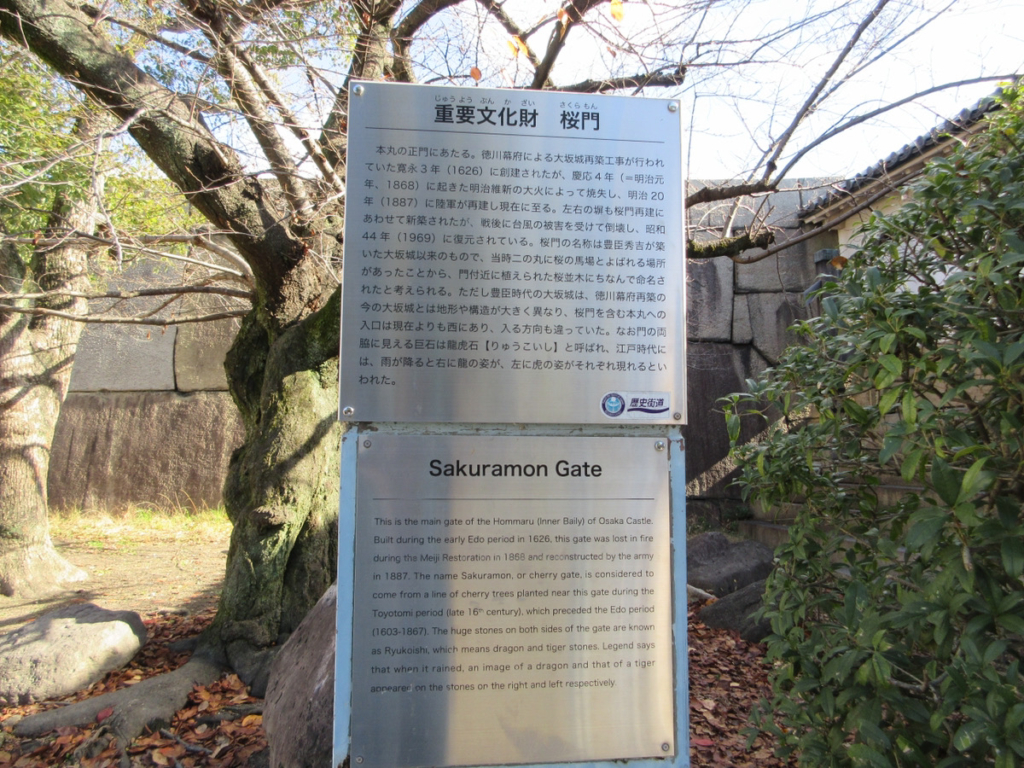
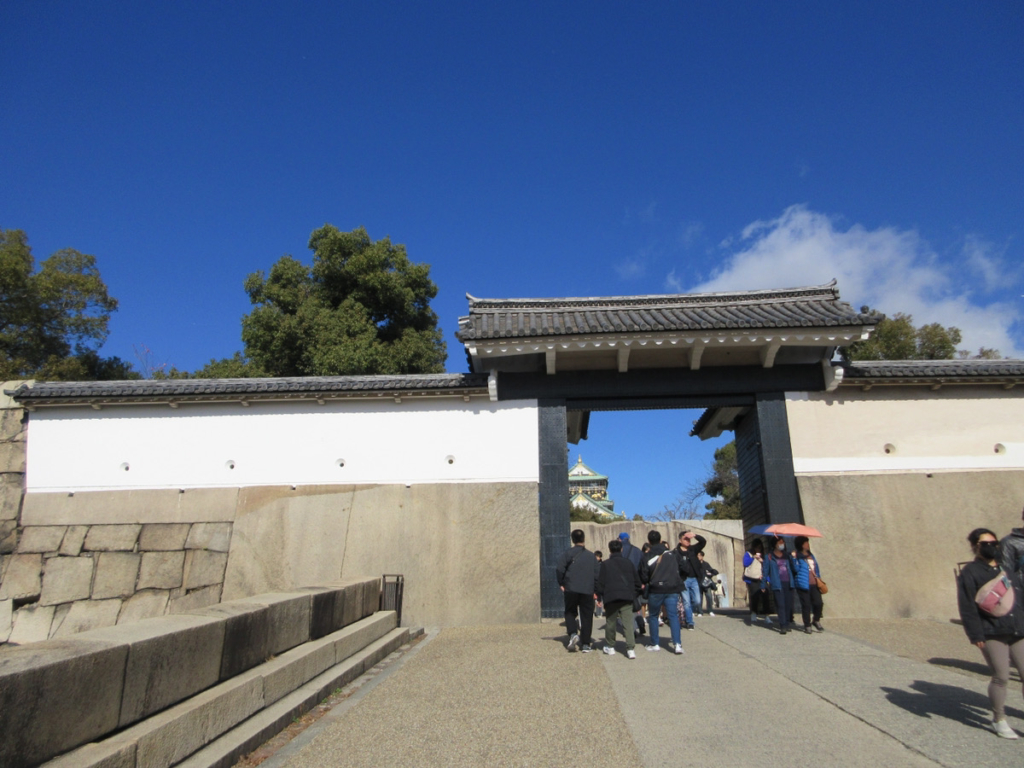
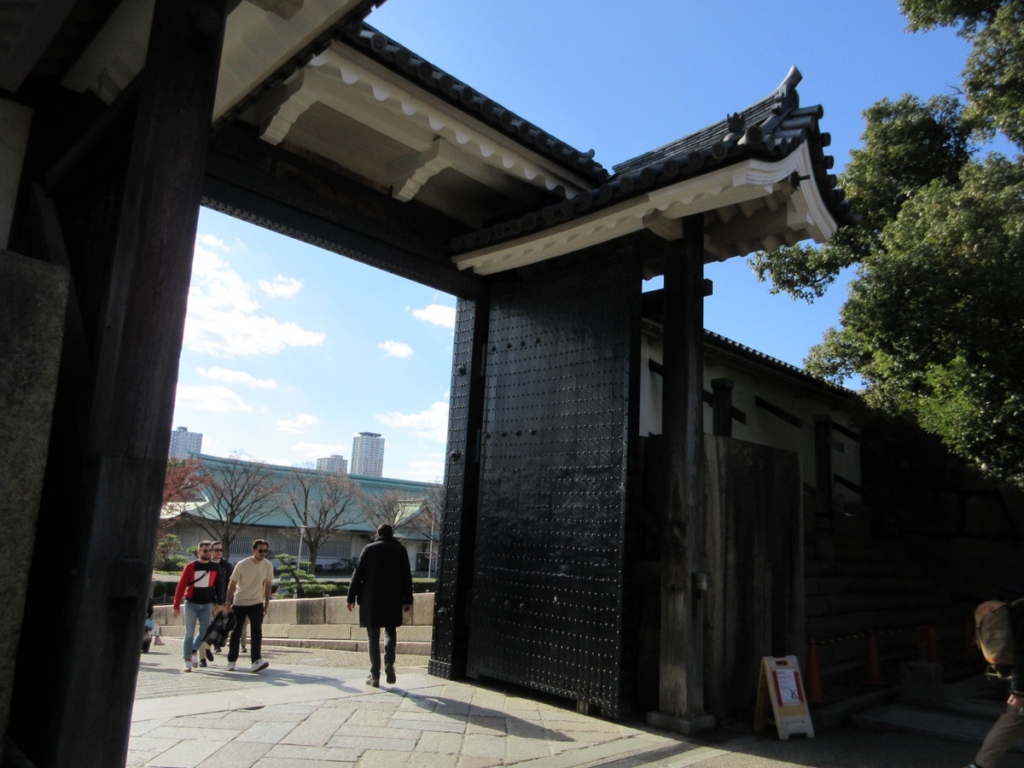
Senkan Turret
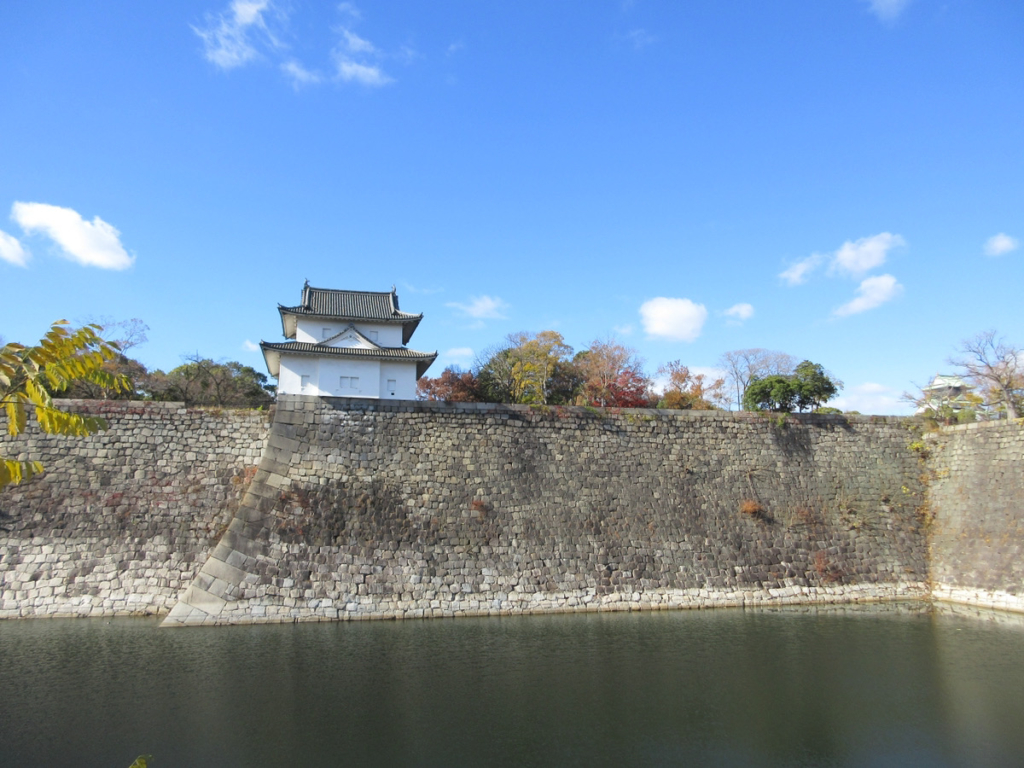
Gold Storehouse
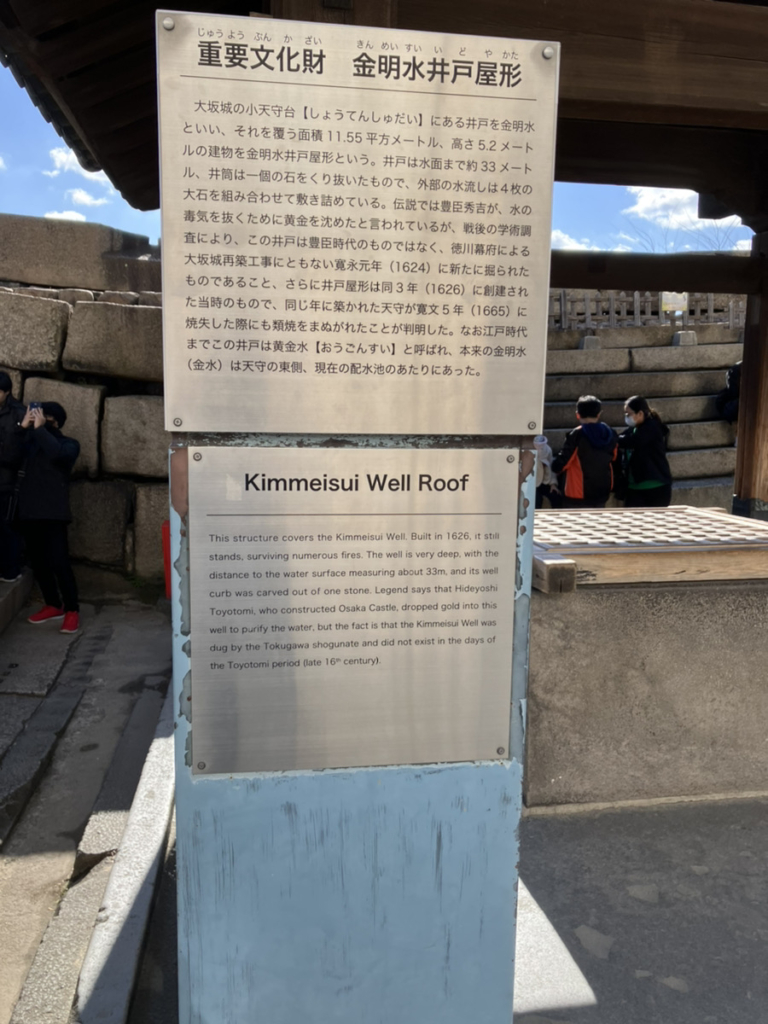
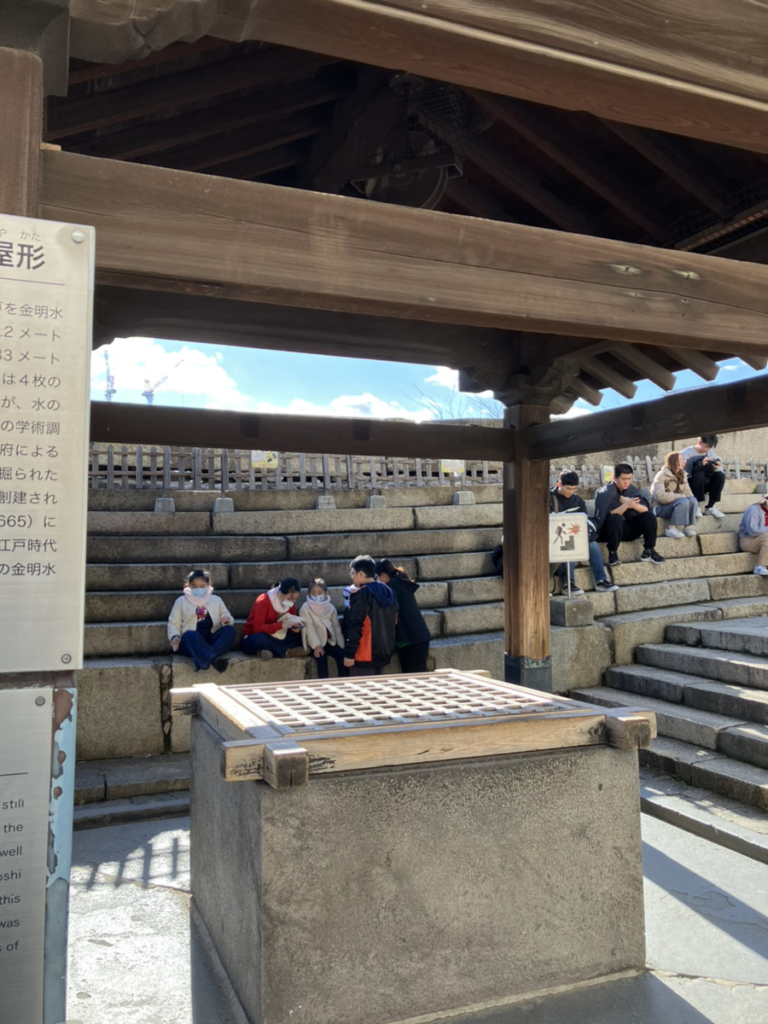
Tamonturret
Inui Turret
Number One Turret
Number Six Turret
Ensho Storehouse
Houkoku Shrine
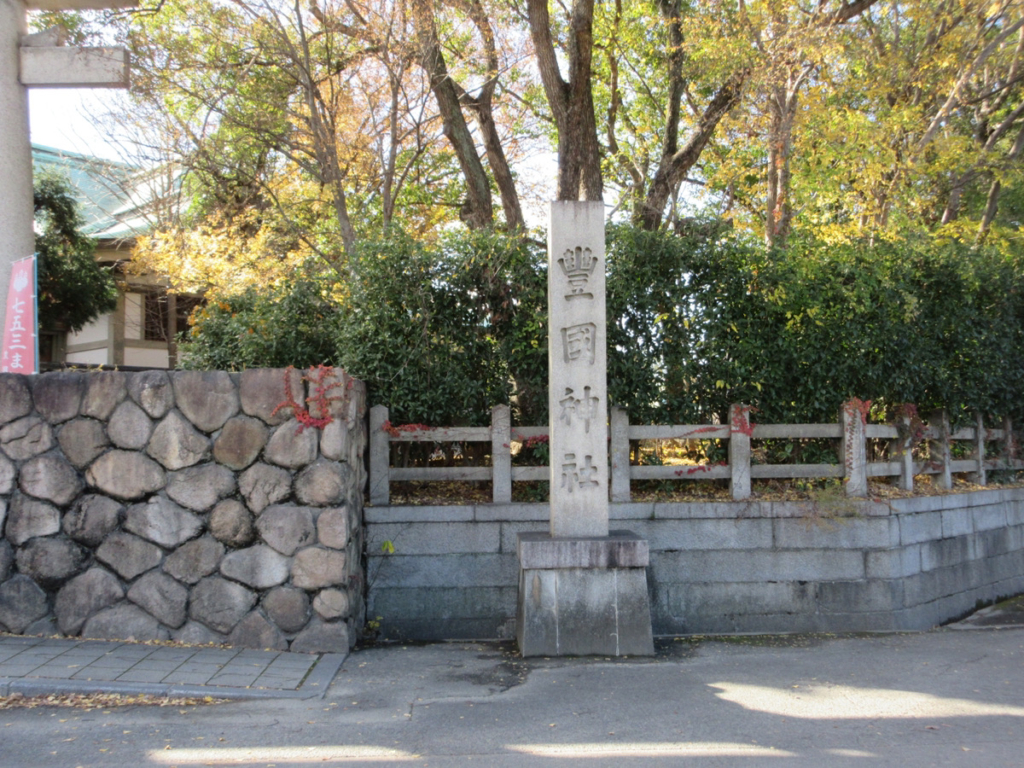
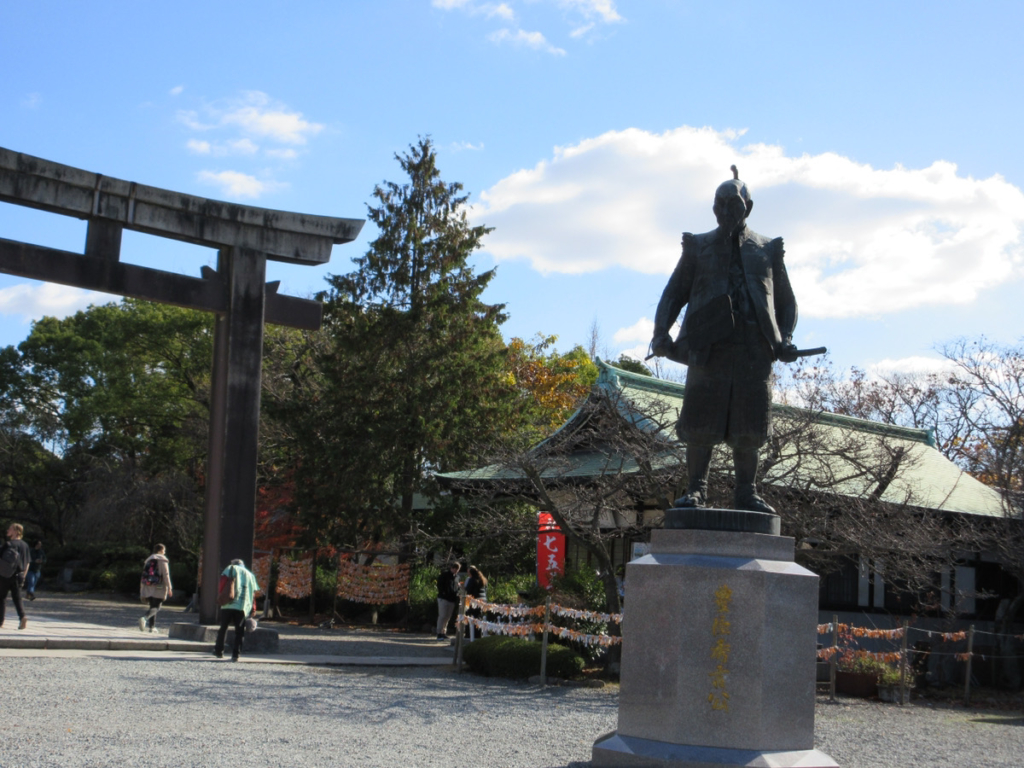
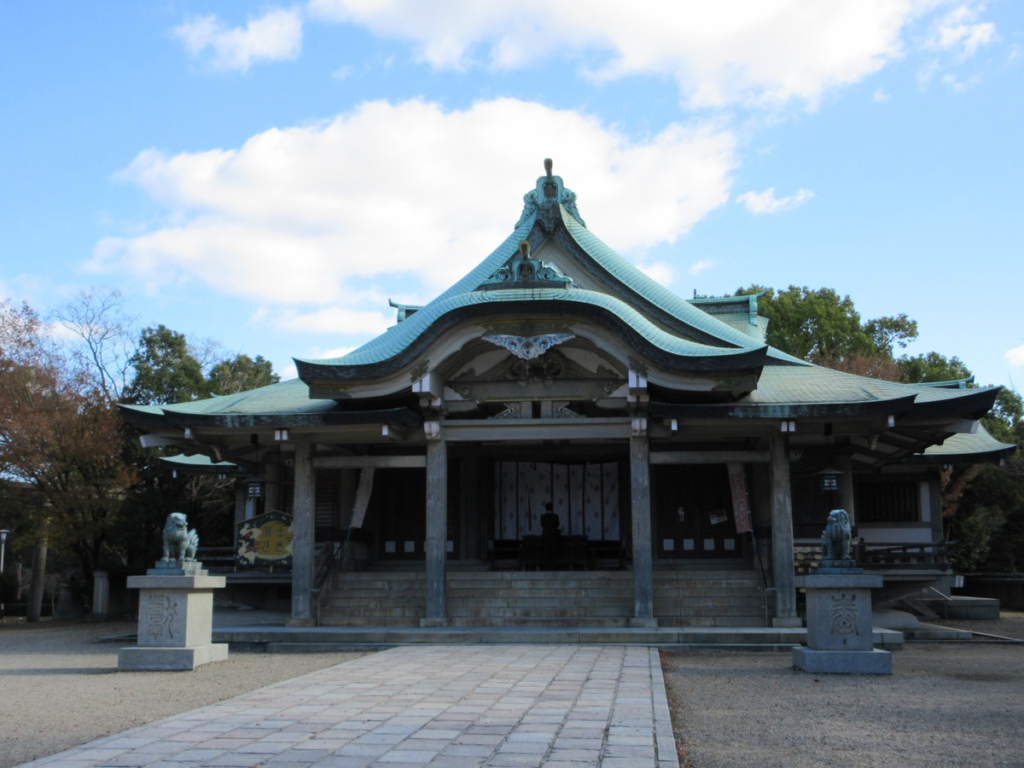
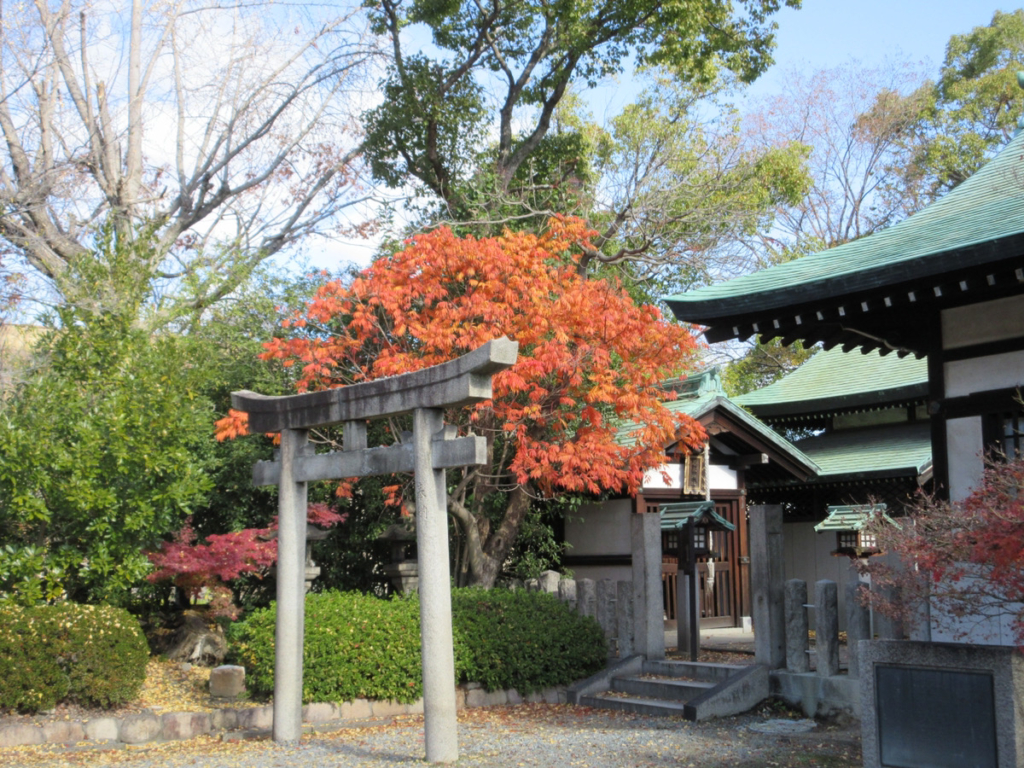
The Houkoku Shrine, closely linked with Osaka Castle, was originally built to enshrine Toyotomi Hideyoshi, the castle’s constructor and a prominent warlord and politician of Japan’s Warring States period. He built the castle as a symbol of his power and wealth, making it the Toyotomi family’s headquarters. The shrine was established posthumously to honor Hideyoshi as a deity, symbolizing respect for him and his legacy. Thus, the relationship between Osaka Castle and Houkoku Shrine centers around the historical figure of Toyotomi Hideyoshi, reflecting his role and influence in Japanese history.
Gokurakubashi Bridge
Gokurakubashi is an important historical structure in Osaka Castle. The name “Gokurakubashi,” which translates to “Paradise Bridge,” is believed to be derived from the Jodo Shinshu Honganji Temple, originally located in this area during the Warring States period. This term refers to the Buddhist concept of a peaceful, blissful realm. The bridge has been rebuilt several times throughout the history of Osaka Castle and still retains its historical significance today.
The Modern Gokurakubashi:
Today’s Gokurakubashi is 54 meters long and 5.4 meters wide, constructed with reinforced concrete for its piers and main beams. However, the upper part of the bridge maintains a traditional structure in consideration of the historical landscape.
History of Gokurakubashi:
Gokurakubashi, connecting the Yamazato-maru and Ni-no-maru areas, was originally built as part of Osaka Castle, which Toyotomi Hideyoshi began constructing in 1583. After the fall of Toyotomi’s Osaka Castle during the Summer Siege of Osaka, the bridge was buried and lost. It was later reconstructed by the Tokugawa Shogunate when they rebuilt Osaka Castle. During the Edo period, it was an 8-meter-wide wooden bridge but was destroyed in the great fire during the Meiji Restoration. The bridge was rebuilt again in 1965, leading to the current Gokurakubashi.